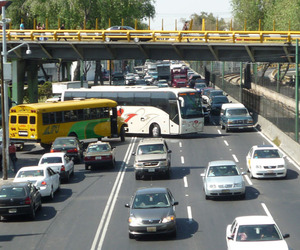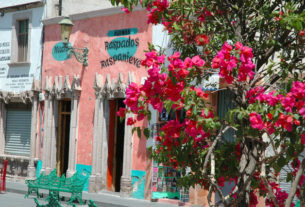
The thought of driving in Mexico strikes a deadly fear into the hearts of many Americans and Canadians alike. Of course, they purchased Mexican car insurance when they crossed the border. Yet somehow this only made them feel legal, not safe. Now here’s the reality as they ease their $46,000 BMW onto the pavement and point it south.
They have heard that there is no rhyme or reason to the driving there, and any clown can get a license. There is some evidence for this belief. But they are tourists in the classical sense, they want to cruise from town to town and stop when the spirit moves them. Serendipity is a proven value in their lives, and they would never be caught taking a package tour, even to Antarctica. Furthermore, they hate what air travel has become.
Isn’t that the dilemma for many travelers to Latin America?
Before my wife and I moved to San Miguel de Allende in 2007, she was driving a Saab and I drove an Infiniti. We knew they couldn’t easily be serviced in this mountain town of 75,000, so we sold them and bought a Ford when we arrived. There was the choice between a car and a pickup, and we had heard that license plates were much cheaper on new pickups, but we felt because of the limited passenger capacity, we had to choose the car. After all, wouldn’t hundreds of our friends and family from the US soon be flocking down to see us? We hadn’t yet reckoned on the crusading American media, obviously.
Unfortunately, our estimate of the pickup’s passenger capacity was wildly off too. We’ve since been keeping a running count on the record for the most passengers in a pickup. It presently stands at sixteen people and a dog. This can be very handy running back and forth to the countryside with your extended family, but it occasionally results in some astounding highway accidents.
San Miguel is a great historic town, and appropriately, it has no traffic lights. Major intersections on the outskirts are handled by roundabouts, which are called glorietas here. The idea is simple, although it looks daunting to many. The center island is about a hundred feet across. In the middle is a monument to a patriotic figure, although some believe the statue represents Chaos, the god of traffic. Four streets converge at the circle.
Within, traffic moves counterclockwise. You enter after yielding to the left, and continue around to the right until you exit on the first, second or third street. Or you can go completely around when you’re doubling back. If you can keep your wits about you, it works well. People are generally polite and orderly. The worst move you can make is to freeze up, come to a complete stop within the circle, and cover your face with your hands. I have seen this happen and it’s never well received.
This town has a number of stop signs, none of them in the central part. They are treated as advisory in nature, and I have never seen anyone stop for one unless the failure to do so would result in a collision. This includes me.
All other intersections are handled on an alternating basis. You go, then I go, etc. Everyone understands this and it works well unless the other car is driven by a person from Mexico City or the northern border states. In that case you are regarded as a fool and a victim for letting him through. This attitude will be well understood by people who drive in the US.
In general, there is an attitude of live and let live. I have not seen road rage here among Mexicans, only expats. Indeed, people are tolerant of what I regard as free-style driving. A certain amount of improvisation is customary. If you see someone approaching in your lane, the natural thing to do is change lanes yourself into oncoming traffic, which will then slow down to allow your eventual return to your own lane.
The concept of speed limits is understood only by the transit authorities, and is the object of crude humor among the general population.
Flashing colored lights are appreciated for themselves, but using them to signal turns when mounted on cars is a concept that has not yet caught on in our part of Mexico. One exception is their use on trucks in highway settings. Say you are behind a truck signaling with the left blinker. This means either, Pass me because it’s clear ahead, or I am going to turn left now. Your life depends on how you scan the nuance of this.
Streets are generally constructed from the two most common compounds on earth: dirt, and stones about the size of a large grapefruit. The stones are simply set in a matrix of dirt. Over time, the dirt is pounded into a fine dry powder that floats upward and seeks the interior of your electronic equipment, where it settles once again in the tiny connections between wires. Over time, the cobblestones loosen and have to be repacked in more dirt. Driving over this rugged surface, charmingly suggestive of medieval London or Paris, gradually loosens all the nuts and bolts in your car until your new BMW sounds like a 1960s jug band as it lurches down the street.
Both tires and shock absorbers have the life expectancy of a butterfly in a hurricane. What the streets do not do to your car, the sun and weather will.
By now, I hope I have established that what at first appears to be random and senseless is really a functioning system that can be understood by most visitors with a knack for improvisation and a broad sense of humor. I should point out that I have written mainly about driving in San Miguel. Regional differences exist.
A final word about parking. Someone once asked me how my detective character always finds a parking place in San Miguel. That, I replied, is why it’s called fiction.


